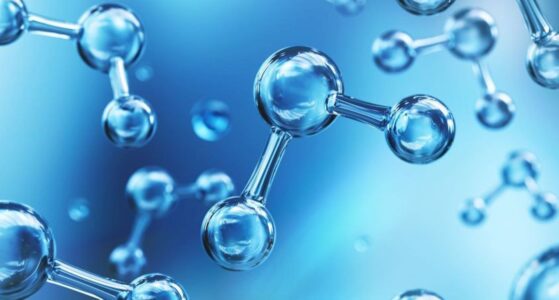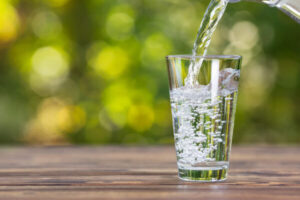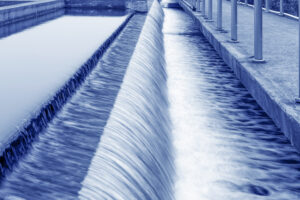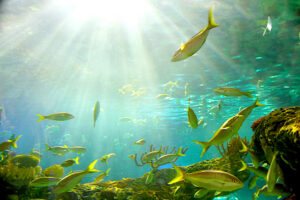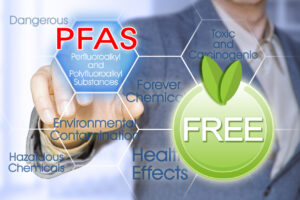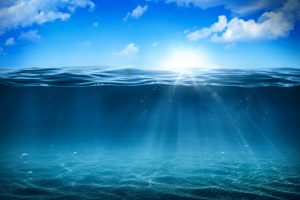Table of Contents
- 1 UV Water Purification – Advanced, Chemical-Free Water Treatment Solutions
- 2 How UV Water Purification Works
- 3 Applications of UV Water Purification
- 3.1 Drinking Water Treatment
- 3.2 Commercial & Industrial UV Water Treatment Applications
- 3.3 Aquaculture & Aquarium UV Water Treatment
- 3.4 Life Sciences & Healthcare Water Treatment
- 3.5 Wastewater Treatment (Municipal and Industrial)
- 3.6 Water Reclamation (Water Recycling and Reuse)
- 3.7 UV Light in the Fight Against PFAS Contamination
- 3.8 Pool & Spa Water Treatment
- 3.9 UV Ballast Water Treatment
- 4 Types of UV Lamps Used in Water Purification
- 5 Key Benefits of UV Water Purification
- 6 Regulatory Compliance & Safety Standards
- 7 Installation, Maintenance & Operation Best Practices
- 8 Factors Affecting UV Water Treatment Efficiency
- 9 Emerging Trends in UV Water Treatment
- 10 LightSources’ Advanced UV Lamp Technology
- 11 Why Choose UV Water Purification?
UV Water Purification – Advanced, Chemical-Free Water Treatment Solutions
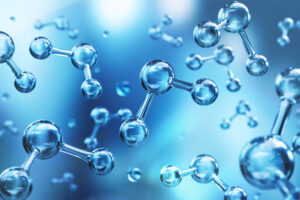 UV water purification is a chemical-free water treatment technology that utilizes ultraviolet (UV-C) light to effectively disinfect water by inactivating harmful microorganisms. UV-C radiation, typically at the germicidal wavelength of 254 nanometers, penetrates bacteria, viruses, protozoa, and other pathogens, disrupting their DNA and RNA, rendering them unable to reproduce or cause infection. This method ensures safe and high-quality water without altering taste, odor, or chemical composition, and without producing harmful byproducts.
UV water purification is a chemical-free water treatment technology that utilizes ultraviolet (UV-C) light to effectively disinfect water by inactivating harmful microorganisms. UV-C radiation, typically at the germicidal wavelength of 254 nanometers, penetrates bacteria, viruses, protozoa, and other pathogens, disrupting their DNA and RNA, rendering them unable to reproduce or cause infection. This method ensures safe and high-quality water without altering taste, odor, or chemical composition, and without producing harmful byproducts.
The growing importance of UV technology in water treatment reflects the increasing global demand for clean, safe, and environmentally sustainable water purification solutions. Unlike chemical disinfectants such as chlorine, UV water purification leaves no residual contaminants or chemical taste, making it an ideal solution for drinking water and sensitive industrial processes. It also supports environmental sustainability by avoiding the release of toxic chemicals into ecosystems.
UV water purification is versatile and widely used across numerous applications, including residential drinking water treatment, municipal water supplies, industrial water purification processes, and ballast water treatment in the maritime industry. It’s also increasingly applied in specialized fields such as aquaculture, advanced oxidation processes for the removal of persistent contaminants like PFAS, and Total Organic Carbon (TOC) reduction in ultrapure water systems.
To gain a deeper understanding of how UV disinfection works and its effectiveness across various water treatment scenarios, visit our detailed resource on Understanding UV Water Disinfection.
How UV Water Purification Works
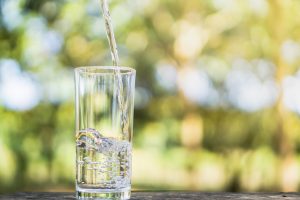 UV water purification systems use ultraviolet (UV-C) radiation, primarily at a wavelength of 254 nanometers (nm), to disinfect water by directly disrupting the genetic material (DNA and RNA) of microorganisms. This targeted action prevents pathogens from replicating, effectively rendering them inactive and harmless. The UV-C radiation penetrates the cell walls of bacteria, viruses, and protozoa, achieving rapid and reliable disinfection.
UV water purification systems use ultraviolet (UV-C) radiation, primarily at a wavelength of 254 nanometers (nm), to disinfect water by directly disrupting the genetic material (DNA and RNA) of microorganisms. This targeted action prevents pathogens from replicating, effectively rendering them inactive and harmless. The UV-C radiation penetrates the cell walls of bacteria, viruses, and protozoa, achieving rapid and reliable disinfection.
One of the key benefits of UV water purification is that it is entirely chemical-free. Unlike chemical disinfectants such as chlorine, UV treatment doesn’t alter the water’s taste, odor, or pH, and it leaves no residual toxins or harmful by-products. This makes UV technology exceptionally safe for drinking water supplies, industrial processes, and environmentally sensitive applications.
UV purification demonstrates high efficacy against a broad spectrum of pathogens, including:
- Bacteria: Effectively inactivates common waterborne bacteria such as E. coli and Salmonella, which can cause severe gastrointestinal illness.
- Viruses: Quickly neutralizes viruses like Rotavirus, Hepatitis A, and Poliovirus, ensuring comprehensive viral disinfection.
- Protozoa: Highly effective against resilient protozoan pathogens like Cryptosporidium and Giardia, which are often resistant to chemical disinfectants.
For additional details on the UV disinfection process, explore our resource on Water Purification with UV Light. To understand more about the environmental and safety benefits of UV systems, visit UV Water Treatment Systems are Eco-Friendly and Safe.
Applications of UV Water Purification
Ultraviolet (UV) water purification provides highly effective, chemical-free disinfection suitable for diverse applications across residential, municipal, industrial, maritime, and specialized sectors. Its ability to eliminate pathogens and contaminants without chemical residues makes it essential for protecting public health, ensuring water quality, and complying with stringent regulatory standards.
Drinking Water Treatment
UV water purification systems provide reliable and safe drinking water for residential settings, including private wells, rural supplies, and municipal water networks. Point-of-entry (whole-home) and point-of-use (individual faucet) UV drinking water disinfection systems ensure protection against harmful pathogens such as bacteria, viruses, and chlorine-resistant protozoa like Cryptosporidium and Giardia. These systems require minimal maintenance and produce no chemical by-products, preserving water quality and taste.
Commercial & Industrial UV Water Treatment Applications
Industries and commercial facilities rely heavily on UV water purification to achieve stringent purity standards crucial for product safety, regulatory compliance, and operational efficiency. Germicidal UV lamps effectively disinfect process water, neutralize residual ozone and chlorine/chloramines, and significantly reduce Total Organic Carbon (TOC), providing consistently high-quality water essential in industrial operations.
UV water treatment systems are widely utilized across diverse sectors, including:
- Pharmaceutical & Biotechnology: Ensuring water meets USP standards for purified water and water for injection (WFI).
- Food & Beverage Processing: Used extensively in dairy plants, breweries, wineries, bottled water production, and beverage manufacturing to ensure microbial safety and product purity.
- Electronics & Semiconductor Manufacturing: Maintaining ultra-pure water quality necessary for precision manufacturing processes.
- Cosmetics & Personal Care Products: Ensuring contaminant-free water for product formulation and production.
Additionally, UV water purification supports numerous commercial and institutional facilities, including hospitals, dialysis centers, laboratories, veterinary clinics, universities, nursing homes, hotels, cruise ships, resorts, amusement parks, golf courses, and community residential systems. UV systems effectively control microorganisms in fountains, ornamental ponds, aquariums, animal husbandry facilities, and cooling towers.
UV technology also addresses specialized water quality concerns by reducing ozone and significantly lowering Total Organic Carbon (TOC) levels in high-purity industrial applications.
Aquaculture & Aquarium UV Water Treatment
As aquaculture grows, UV disinfection for aquariums becomes essential for maintaining optimal conditions in fish hatcheries, aquaculture farms, aquariums, and ornamental ponds. UV germicidal lamps eliminate pathogens such as parasites, bacteria, and viruses without the use of chemicals, promoting healthier aquatic environments. UV treatment also effectively controls algae growth, improving water clarity and quality without negatively impacting marine life.
Life Sciences & Healthcare Water Treatment
Life sciences sectors, including bioengineering, pharmaceutical manufacturing, genetic research, nanotechnology, and biotechnology, rely on UV water purification to meet stringent United States Pharmacopeia (USP) standards. Germicidal UV lamps disinfect water rapidly, ensuring purified water (PW) and water-for-injection (WFI) standards are met reliably without chemical residues, vital for laboratory and healthcare applications.
By leveraging UV technology, these diverse sectors effectively achieve robust, chemical-free disinfection, ensure regulatory compliance, and protect human and environmental health across a broad range of water purification needs.
Wastewater Treatment (Municipal and Industrial)
Wastewater treatment refers to the process of cleaning water that has been contaminated or polluted by domestic, commercial, agricultural, or industrial activities. Municipal wastewater typically comes from homes, businesses, and city sewage systems. Industrial wastewater, on the other hand, results from manufacturing processes, energy production, chemical processing, and other industrial operations.
Purpose of Wastewater Treatment:
- Removes harmful contaminants, pathogens, and pollutants.
- Ensures the treated water is safe enough to be released back into rivers, lakes, or oceans without causing environmental harm.
Typical Applications:
- City sewage treatment plants.
- Industrial facilities (pharmaceutical manufacturing, food processing, oil and gas, chemical plants).
- Agricultural runoff management.
UV wastewater treatment systems effectively disinfect water contaminated by domestic sewage, industrial processes, agricultural runoff, and commercial operations. Utilizing germicidal UV-C lamps at 254 nm, these systems neutralize pathogens and microorganisms without chemical additives, allowing treated water to be safely discharged back into the environment. This technology ensures compliance with environmental standards and protects natural water bodies from contamination.
UV treatment effectively controls chlorine-resistant organisms, such as Cryptosporidium, which pose significant public health risks. UV purification supports municipalities in meeting EPA drinking water standards without relying solely on chemical disinfectants. Water reclamation conserves freshwater resources, reduces environmental impact, and supports communities in sustainable water management initiatives.
Water Reclamation (Water Recycling and Reuse)
Water reclamation specifically refers to treating wastewater to a level of purity that allows it to be reused safely, typically for irrigation, agriculture, industrial cooling, groundwater recharge, or even potable (drinking) reuse. It’s essentially a step further than typical wastewater treatment—aiming to recover valuable water resources instead of simply disposing of treated water back into natural water bodies.
Purpose of Water Reclamation:
- Conserves water resources through reuse, reducing dependence on freshwater sources.
- Minimizes environmental impact and promotes sustainable water management.
Typical Applications:
- Agricultural and landscape irrigation.
- Industrial process water reuse.
- Groundwater recharge projects.
- Recreational facilities, such as golf courses, parks, and ornamental fountains.
- Greenhouse irrigation and recirculation systems.
UV water reclamation involves advanced treatment of wastewater, making it clean enough for beneficial reuse such as irrigation, industrial processing, groundwater recharge, and other applications. This sustainable approach uses germicidal UV water purification to eliminate harmful pathogens and ensure water meets stringent quality standards required for reuse.
UV Light in the Fight Against PFAS Contamination
Advanced Oxidation Processes (AOPs), combining UV with oxidizing agents like ozone or hydrogen peroxide, effectively degrade challenging contaminants such as PFAS, pharmaceuticals, pesticides, and industrial solvents. UV-AOP is increasingly adopted by municipalities and industries due to its ability to remove persistent pollutants not adequately addressed by conventional treatments, providing safer, cleaner water.
Pool & Spa Water Treatment
Pools and spas often rely heavily on chlorine, which can cause irritation and unwanted odors. Germicidal UV lamps, particularly ozone-producing types, provide powerful, odorless UV disinfection for pools and spas, significantly reducing reliance on chemical treatments. UV and ozone-based purification ensures healthier water conditions and dramatically improves user comfort.
 UV Ballast Water Treatment
UV Ballast Water Treatment
UV technology plays a pivotal role in maritime ballast water treatment, helping ships comply with international and U.S. Coast Guard regulations designed to control invasive aquatic species. Germicidal UV lamps disinfect ballast water effectively, preventing ecological damage by eliminating potentially harmful marine organisms transported between ports.
Types of UV Lamps Used in Water Purification
Selecting the right UV lamp type is essential for achieving optimal results in various water purification applications. Lamp selection depends on factors such as the scale of the water system, required intensity, target contaminants, and operational longevity.
Low-Pressure Mercury Lamps
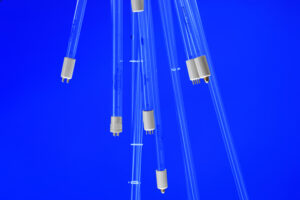 Low-pressure mercury lamps are standard UVC lamps that emit radiation primarily at a wavelength of 254 nm, which is highly effective for general germicidal disinfection. These lamps provide reliable, cost-effective performance ideal for small-scale applications, including residential water systems, point-of-use drinking water purifiers, and small aquaculture or commercial setups.
Low-pressure mercury lamps are standard UVC lamps that emit radiation primarily at a wavelength of 254 nm, which is highly effective for general germicidal disinfection. These lamps provide reliable, cost-effective performance ideal for small-scale applications, including residential water systems, point-of-use drinking water purifiers, and small aquaculture or commercial setups.
Amalgam Lamps
Amalgam lamps offer significantly higher UV output and a longer operational life compared to standard mercury lamps. With stable performance over wide temperature ranges, amalgam lamps are particularly suited for large-scale purification systems, such as municipal drinking water treatment facilities, industrial process water applications, and large aquaculture operations. Their durability and efficiency help reduce maintenance and operational costs.
Medium-Pressure UV Lamps
Medium-pressure UV lamps emit a broader spectrum of UV radiation, making them effective in applications that require not only microbial inactivation but also advanced oxidation of chemical contaminants. Medium-pressure lamps are particularly beneficial in treating industrial wastewater, complex contaminants, ballast water management systems, and other large-flow applications. Their high-intensity output ensures rapid and efficient purification, especially in systems demanding quick turnover or high throughput.
185 nm Ozone-Producing Lamps
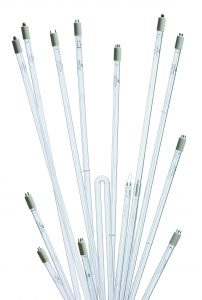 UV lamps that operate at 185 nm generate ozone, a powerful oxidizing agent beneficial for removing challenging organic contaminants and reducing Total Organic Carbon (TOC) levels. These ozone-producing lamps are commonly integrated into advanced oxidation processes (AOPs), providing superior disinfection and chemical degradation capabilities for high-purity water applications, industrial wastewater treatment, and pool/spa water purification. Learn more about UV TOC Reduction in Water with Quality Lamps.
UV lamps that operate at 185 nm generate ozone, a powerful oxidizing agent beneficial for removing challenging organic contaminants and reducing Total Organic Carbon (TOC) levels. These ozone-producing lamps are commonly integrated into advanced oxidation processes (AOPs), providing superior disinfection and chemical degradation capabilities for high-purity water applications, industrial wastewater treatment, and pool/spa water purification. Learn more about UV TOC Reduction in Water with Quality Lamps.
Far-UVC (222 nm) Lamps
Far-UVC lamps, operating at 222 nm, represent an emerging UV technology. While primarily explored for safe, human-friendly air and surface disinfection applications, Far-UVC may offer future opportunities in specialized UV water purification scenarios. Current research is ongoing to evaluate its efficacy and potential integration into innovative water purification processes.
Learn more about UV Purification of Water – Cost-Effective Solutions, and UV TOC Reduction in Water with Quality Lamps, and contact the lighting engineers at LightSources for all your UV disinfection lamp needs.
Key Benefits of UV Water Purification
UV water purification systems provide effective, reliable disinfection without introducing chemicals, ensuring safe and clean water across various applications.
- Chemical-Free Disinfection:
UV purification does not introduce chemicals into the water, ensuring that no harmful residues or chemical additives remain. Unlike chlorination, UV treatment does not alter the taste, odor, or pH of water, providing consistently safe, pure drinking water. - Instant Disinfection:
UV light provides immediate disinfection as microorganisms are neutralized instantly upon exposure. This rapid process allows continuous water flow without the need for storage tanks or extensive contact time. - Low Maintenance & Cost-Effective:
Compared to traditional chemical or filtration methods, UV water purification requires minimal maintenance and offers low operational costs. Regular lamp replacements and sleeve cleanings are straightforward, reducing overall maintenance demands and associated expenses. - Eco-Friendly:
UV purification is environmentally friendly, producing no toxic by-products or chemical residues. This sustainable approach significantly reduces environmental impact compared to chemical-based disinfection methods.
Regulatory Compliance & Safety Standards
UV water treatment systems must adhere to regulatory guidelines to guarantee safe and effective disinfection, meeting stringent standards established by authorities like the EPA and NSF/ANSI.
EPA UV Disinfection Regulations
- Compliance with the EPA’s Ultraviolet Disinfection Guidance Manual ensures that UV water treatment systems meet specific UV dosage and monitoring standards required for public water safety. Systems must reliably deliver the required UV dose, validated by routine UV intensity monitoring to maintain public health protection.
- The NSF/ANSI 55 standard defines two certification classes for UV water treatment systems:
- Class A Systems: Designed for treating microbiologically unsafe water, Class A systems deliver a minimum UV dose of 40 mJ/cm², effectively inactivating bacteria, viruses, Cryptosporidium, and Giardia. These systems require UV intensity monitoring to ensure continuous disinfection performance.
- Class B Systems: Intended to supplement already-safe drinking water, Class B systems deliver a lower UV dose (minimum 16 mJ/cm²) to reduce non-pathogenic microorganisms, improving aesthetic water quality without the stringent requirements of Class A systems.
Compliance with these standards guarantees effective performance, safety, and consumer confidence.
Installation, Maintenance & Operation Best Practices
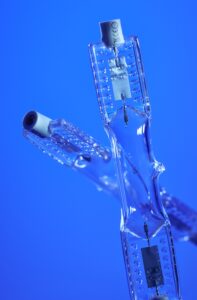 Proper installation, regular maintenance, and adherence to best operational practices are vital for ensuring consistent and effective UV disinfection performance.
Proper installation, regular maintenance, and adherence to best operational practices are vital for ensuring consistent and effective UV disinfection performance.
- Lamp Replacement Schedule:
UV lamps degrade over time and require replacement at manufacturer-recommended intervals, typically between 9,000 and 16,000 operating hours. Timely lamp replacements maintain adequate UV intensity and reliable pathogen inactivation. - Quartz Sleeve Maintenance:
Regular cleaning of the quartz sleeves surrounding UV lamps is essential to prevent mineral buildup or biofilm accumulation, which can obstruct UV penetration and reduce disinfection effectiveness. Routine sleeve cleaning ensures optimal performance and extends system lifespan. - UV Intensity Monitoring:
Monitoring UV intensity regularly ensures system efficacy and safety, verifying that the delivered UV dose meets regulatory requirements and remains effective for pathogen inactivation. Automated monitoring systems and alarms alert operators to any performance drops, facilitating timely maintenance and system adjustments.
Factors Affecting UV Water Treatment Efficiency
Effective UV disinfection depends on specific operational factors, including water quality, system sizing, and water flow rates, each critical to achieving optimal disinfection.
- Water Clarity (UV Transmittance):
UV transmittance (UVT) measures how effectively UV light penetrates the water. High turbidity, suspended solids, or coloration can decrease UV penetration and treatment efficiency, highlighting the importance of pre-treatment methods such as filtration or reverse osmosis (RO). - Flow Rates & System Sizing:
Proper sizing of UV reactors is essential to ensure that water receives the appropriate UV dose. Higher flow rates require larger or more powerful UV systems to maintain effective disinfection, preventing pathogens from bypassing adequate exposure. - Scavenging Capacity:
Organic and inorganic substances within water can absorb UV energy, reducing the availability of UV photons needed for disinfection. Pre-treatment processes such as filtration, carbon filtration, or reverse osmosis effectively remove these substances, maximizing UV efficiency and ensuring consistent pathogen inactivation.
Emerging Trends in UV Water Treatment
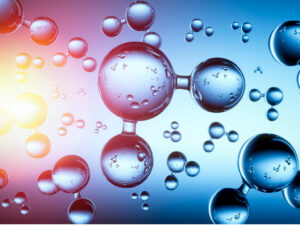 Advances in UV water treatment technology continue to transform how municipalities, industries, and private entities approach water safety, quality, and sustainability.
Advances in UV water treatment technology continue to transform how municipalities, industries, and private entities approach water safety, quality, and sustainability.
- Growth of UV-based Advanced Oxidation Processes (AOPs):
UV-based Advanced Oxidation Processes (AOPs) are increasingly adopted for effective removal of emerging contaminants, such as pharmaceuticals, pesticides, PFAS, and industrial solvents. By generating highly reactive hydroxyl radicals, these UV AOP systems offer superior oxidation and degradation of complex pollutants, ensuring higher water purity levels. - Increasing Adoption for Potable Water Reuse:
UV AOP systems are seeing expanded use in potable water reuse applications, especially in regions facing water scarcity. By combining UV with oxidants such as hydrogen peroxide, chlorine, or ozone, these systems effectively treat recycled wastewater to potable standards, enhancing sustainability and resource efficiency. - Development of Excimer and Far-UVC Lamp Technologies:
Newer technologies, including Excimer lamps and Far-UVC (222 nm), are being explored for specialized water treatment scenarios. Far-UVC lamps offer potential for applications where conventional UV wavelengths have limitations, providing safer disinfection options and expanded capabilities for targeted contaminant removal.
LightSources’ Advanced UV Lamp Technology
As world leaders in UV lamp technology, LightSources and LightTech offer superior quality and innovative solutions tailored to the demanding requirements of UV water treatment applications globally.
- Industry-Leading Expertise:
With decades of experience in designing, engineering, and manufacturing UV germicidal lamps, LightSources and LightTech provide advanced, high-performance UV solutions for diverse water purification applications. Our lamps are engineered for maximum reliability, optimal UV output, and long operational life. - Proprietary UV Technology:
Our advanced UV lamps feature proprietary ceramic bases, designed for exceptional resistance to heat, moisture, ozone, and UV radiation. These high-quality bases ensure stable, durable performance even under demanding environmental conditions.
- Electronic Ballasts: Efficient power supply for UV lamps, optimizing performance and extending lamp life.
- Low-Pressure Mercury & Amalgam Lamps: Reliable, efficient disinfection lamps suitable for various scales of water treatment systems.
- Medium Pressure UV Lamps: Broad-spectrum lamps ideal for advanced oxidation processes (AOP) and large-flow applications.
- 185 nm Ozone-Producing Lamps: Lamps designed to generate ozone for advanced oxidation, effectively removing complex contaminants and organic compounds.
- Quartz Sleeves & Custom Solutions: Precision quartz sleeves ensure maximum UV transmittance and lamp protection, with custom-engineered lamp solutions tailored to unique water treatment needs.
Why Choose UV Water Purification?
UV water purification is a proven, effective method for ensuring clean, safe water across diverse applications, including municipal drinking water, industrial processes, aquaculture, ballast water, and potable reuse. Offering chemical-free disinfection, immediate pathogen inactivation, and compliance with stringent regulatory standards, UV technology presents clear advantages for modern water management.
LightSources is committed to providing innovative, advanced UV germicidal lamps that reliably meet the evolving demands of water treatment. We invite you to explore our range of solutions and discover how our expertise can support your specific application.
LAMP PRODUCT DATA:
UV Germicidal LampsLAMP APPLICATIONS:
UV Germicidal ApplicationsLightSources provides advanced UV water purification solutions, delivering chemical-free disinfection across municipal, industrial, and residential applications. Our innovative UV germicidal lamps ensure reliable, effective water treatment to meet regulatory compliance and safeguard public health. Contact us today to learn more about how our UV water purification lamps can enhance your water treatment systems.
This post is also available in:
 Chinese (Simplified)
Chinese (Simplified)


